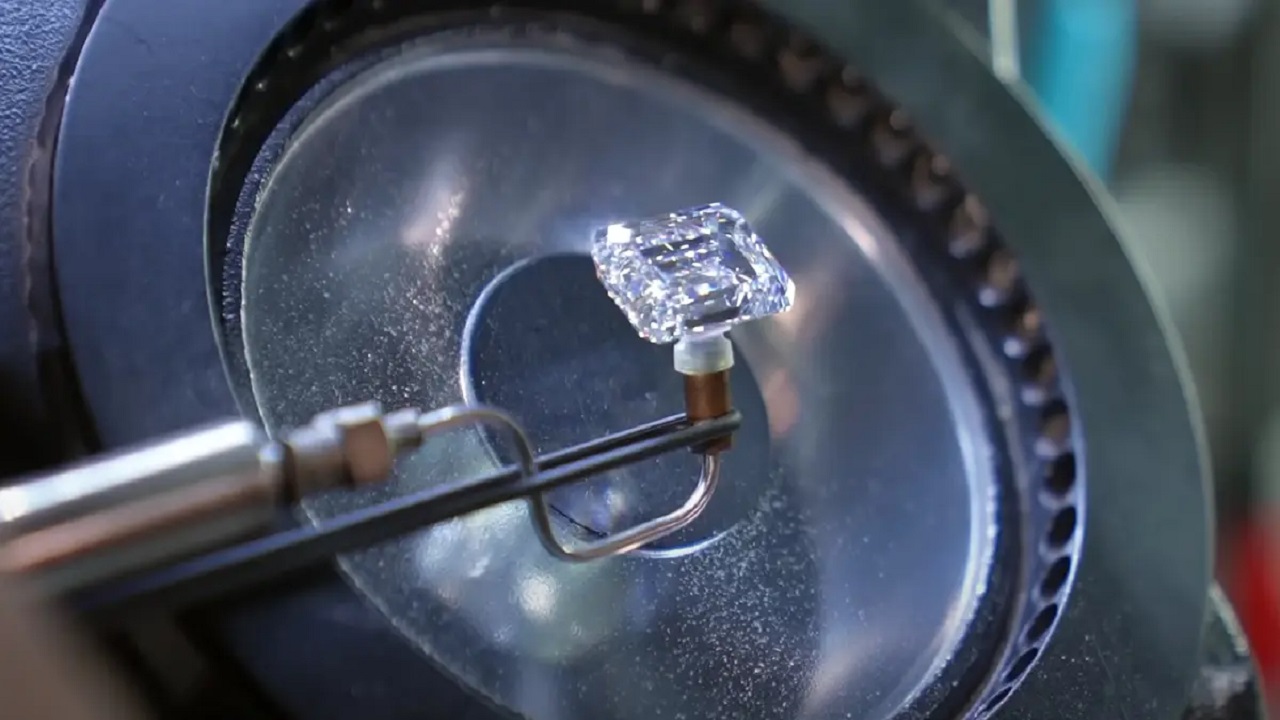With the development of ethical and ecological jewelry goods, lab-grown diamonds—which are still relatively new to the market—have begun to replace mined diamonds. You will get further knowledge about these artificial diamonds and the many processes used in their creation, including chemical vapor deposition (CVD) and high-pressure high temperature (HPHT), by reading this article. Furthermore, we will also look into the comparison between the HPHT vs CVD methods.
Chemical Vapor Deposition (CVD) Method
The CVD method includes the decomposition of the gaseous carbon source such as methane and the process is required to be regulated. The gases are then introduced to a growth chamber containing a base of a diamond seed. A diamond crystal is grown by adding Carbon atoms in a layer-by-layer manner on the seed and this process is done under low pressure and high temperature conditions.
Benefits of CVD Diamonds
Customization
CVD makes it immensely easy to forecast and manage the formation of diamonds in the preferred forms, sizes, and qualities.
Environmentally Friendly
In as much as it is cheaper than conventional mining it is also more efficient in the use of resources hence producing less waste compared to CVD diamonds.
Innovation Potential
This makes the CVD method open doors to other innovations in creating diamonds such as the incorporation of diamond wafers in electronics and quantum computers.
Uses of CVD Diamonds
Earlier, it has been pointed out that the usage of CVD diamonds goes deeper and deeper into all the high technology fields. As a result of their characteristics, they are used in semiconductors, optics as well as in Quantum technologies. Finally, CVD diamonds are also incorporated in fine jewelry because of the implications of quality and the possibility of a brilliant cut.
High Pressure and High Temperature (HPHT) Method
The HPHT method simulates the natural method of formation of diamonds way down in the earth as well as the pressure and temperature. This involves putting a small diamond seed in a source of carbon and then the process requires aggressive pressure of over 725000 psi and a temperature of over 2000 degrees Celsius. In these circumstances, carbon atoms cluster on the seed and it gradually begins to form the larger structure of diamond.
Benefits of HPHT Diamonds
Purity and Clarity
As for the quality issues, HPHT diamonds are widely known to be very high quality since most of them are of higher purity than natural diamonds.
Cost-Effectiveness
The HPHT process is also cheaper as compared to mining natural diamonds; therefore, these gems are cheaper for consumers.
Color Enhancement
HPHT can also be used to enhance or change the color of diamonds to get neon colors which are almost unheard of in nature.
Uses of HPHT Diamonds
Today, HPHT diamonds are employed in various ways; one common use of these diamonds is in engagement rings, besides other uses such as; mechanical utilization. Since they are very hard and can offer high pressure, they are used for cutting, grinding, and drilling sectors.
Characteristics of HPHT and CVD Diamonds
However, there is a difference in the manner in which both HPHT and CVD methods produce high-quality diamonds; each of the manners has its advantages. They are known as HPHT diamonds as they have higher clarity and can be treated to have improved color making the jewelry products made out of them to be more attractive. On the other hand, CVD diamonds offer a degree of customization which makes them more popular, given the method of producing them – environmentally friendly.
The Advantages of Lab-Grown Diamonds
Ethical Considerations
Another advantage of lab-grown diamonds is that there are health concerns with mining and these diamonds are conflict-free. Their production is free from some of the vices associated with diamond mining, which include infringement of people’s rights, and environmental degradation.
Sustainability
This method of diamond production is considered for the environment as compared to the general mining methods. Lab-grown diamonds affect the natural resources to a lesser extent, they require fewer materials, and byproducts and emit a lower amount of carbon.
Affordability
In a nutshell, one can significantly say that artificial or lab-made diamonds are cheaper compared to natural diamonds. This is because with the controlled production process, one will be in a position to cheap the costs hence making the high-quality diamonds within the reach of many.
Conclusion
Diamonds made using the HPHT and the CVD techniques are relatively new in the market of the current world. The present generation of consumers and industries is now in search of those products that have ethical, environmental, and economic values. In the future, with the advancement of technology, lab-grown diamonds will be a key player in carving out what the future of luxury and advancement has in store.

